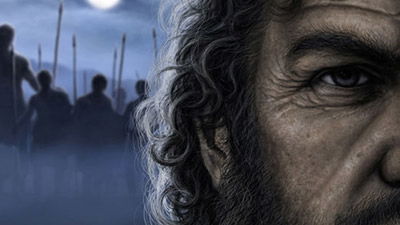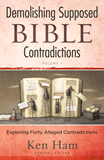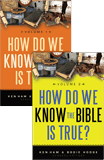Tomb of Jesus’ Brother?
Seven years after its discovery, the James ossuary is still stirring up controversy and debate.
News Source
In 2002, the religious and archaeological community reverberated with the finding of an Aramaic inscription on a Jewish ossuary (burial box) potentially from the time of Christ: Yaakov bar Yosef akhui di Yeshua (James, son of Joseph, brother of Jesus). What made this find interesting was the fact that these types of inscriptions rarely contained the name of brothers—unless the brother was particularly noteworthy. Understandably, this caused a great stir in the media.
These types of inscriptions rarely contained the name of brothers—unless the brother was particularly noteworthy.
After an initial round of testing, however, many experts dismissed the engraving as a fraud, claiming that the inscription itself is a forgery added to a genuine ossuary—perhaps even using some of the original letters. The hype died down, the owner of the box was charged with counterfeit, and the ossuary was mostly forgotten.
While the court of public opinion may have dismissed the case, the Jerusalem District Court is still weighing the matter. Expert witnesses have come and gone, questions have been raised and dismissed, and more than 9,000 pages of proceedings have been compiled. The only certainty so far seems to be that everyone involved has an opinion—but few definitive answers.
At issue is the way in which the inscription was tested. The scientific evidence against authenticity is largely based on the oxygen isotopic content of the patina (a thin crust covering the ossuary). If the isotopic values don’t match the expected values found in Israel at the time (determined from cave stalagmites, for example), then the inscription is considered a fraud.
The problem is that no one is completely sure how the patina forms, though the consensus is that it is solid calcium carbonate deposited by rain, groundwater, and perhaps even wind and biological sources. The unknowns of patina formation leave opportunities for the defense team in the trial. In particular, the standard isotopic range for Israel at the time the ossuary would have been inscribed is much in debate because the amount of rainfall during the Roman era may be as much as double what had previously been accepted.
Before we discuss the ossuary, let’s examine the isotopic data. Regular readers to this column will notice immediately a flaw here that is quite common to uniformitarianism (that natural processes operate today as they did in the past). Even if uniformitarians don’t have all the data—or even a good model for how something formed—they extrapolate back from modern rates and data and assume that the past is just like the present. This, for example, is how they find millions of years using radiometric dating. But, as shown with the rainfall data, if the assumptions are wrong, the dating itself is in serious question. (In fact, secular radiometric dating is likely wrong on more than one assumption.)
The authenticity of the ossuary inscription is irrelevant to the Christian faith.
The authenticity of the ossuary inscription is irrelevant to the Christian faith. If it is real, some Christians may have their faith bolstered, but the truth of Christ’s existence is independent of archaeological finds (even if those finds are a testament to the accuracy of Scripture). For many in the secular world, this box would simply be
circumstantial evidence for the existence of Jesus of Nazareth, a tenet supported only by gospels and scripture [sic]. . . and, of course, by the faith of hundreds of millions through 2,000 years.
Did you catch that? Eyewitness accounts (more than we have for some of the most famous individuals in history and some from extra-biblical sources) are the only evidence we have for the Man who changed everything. Oh, and, of course, the billions of believers (to be accurate) throughout history who have had their lives changed.
Whether the ossuary is authentic or not should not concern believers, since plenty of historical proof is already there for those willing to examine it. Instead, our concern should be to show the world how real Christ is here and now and to carry the gospel of Christ even to those who refuse to believe. An ossuary is unlikely to change hearts, but the Holy Spirit can.
Further Reading
- The James Claims
- The Real Jesus
- The So-Called Jesus Family Tomb
- Get Answers: Jesus Christ, History, Archaeology, The Bible, Radiometric Dating
For More Information: Get Answers
Remember, if you see a news story that might merit some attention, let us know about it! (Note: if the story originates from the Associated Press, FOX News, MSNBC, the New York Times, or another major national media outlet, we will most likely have already heard about it.) And thanks to all of our readers who have submitted great news tips to us. If you didn’t catch all the latest News to Know, why not take a look to see what you’ve missed?
(Please note that links will take you directly to the source. Answers in Genesis is not responsible for content on the websites to which we refer. For more information, please see our Privacy Policy.)
Recommended Resources

Answers in Genesis is an apologetics ministry, dedicated to helping Christians defend their faith and proclaim the good news of Jesus Christ.
- Customer Service 800.778.3390
- © 2024 Answers in Genesis





